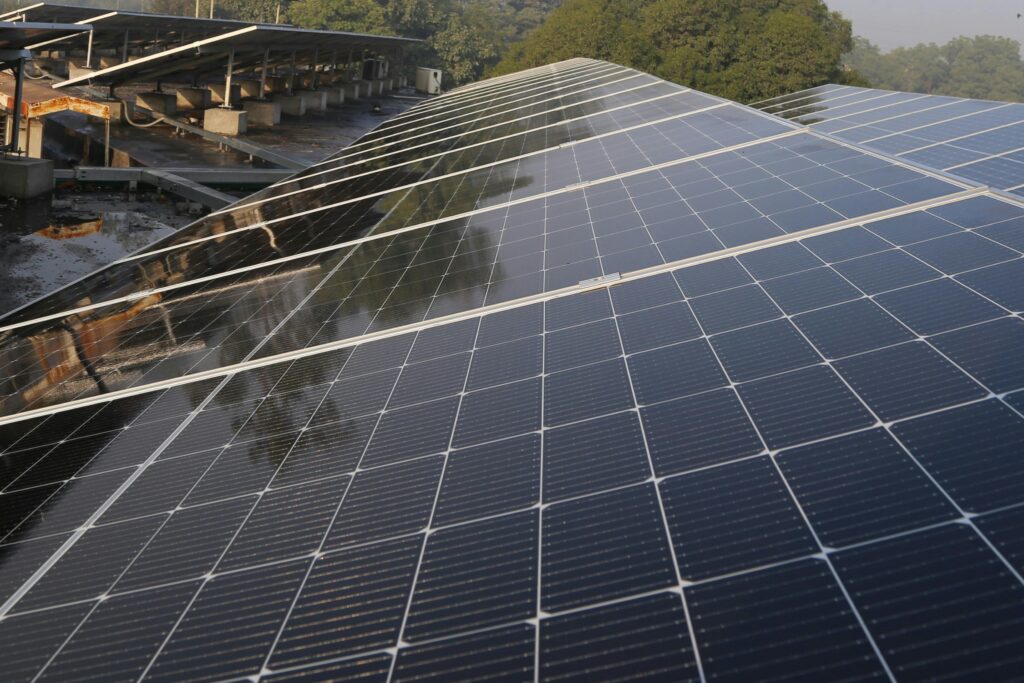The future of solar technology is set to witness groundbreaking advancements that will improve efficiency, accessibility, and integration into daily life. Key trends include the development of next-generation photovoltaic materials, smart energy systems, and artificial intelligence-powered solutions, all aimed at making solar energy more reliable, affordable, and widely adopted.
Key Innovations in Solar Energy
1. Bifacial Solar Panels
Bifacial panels capture sunlight on both the front and rear sides, increasing total energy generation—especially in high-reflectance areas like snowfields, rooftops, and water bodies. These can boost efficiency by up to 30%.
2. Building-Integrated Photovoltaics (BIPV)
BIPV integrates solar cells directly into building materials—like facades, rooftops, and windows—combining energy generation with architectural aesthetics. Ideal for new and retrofitted structures.
3. Perovskite Solar Cells
These lightweight, low-cost cells offer efficiency rates above 25% in labs and are easier to manufacture than traditional silicon cells. Challenges remain in long-term stability and scalability.
4. Solar Tracking Systems
Trackers adjust solar panels to follow the sun throughout the day, significantly increasing power output. Modern systems now feature precise sensors, advanced software, and lower installation costs.
5. Transparent Solar Cells
Designed to be integrated into windows and glass surfaces, these transparent or semi-transparent cells open new possibilities for energy generation in buildings and vehicles.
6. Smart Solar Inverters
These inverters enhance grid communication, enable remote monitoring, and manage energy flow efficiently—significantly improving overall system performance.
7. Artificial Intelligence & Machine Learning
AI is optimizing panel placement, predicting maintenance needs, and improving energy forecasting. These technologies increase efficiency and reduce operational costs.
8. Smart Solar Grids & IoT Integration
IoT-connected solar systems allow for real-time monitoring, predictive maintenance, and efficient energy management. Smart grids support grid stability and integrate solar with other renewables.
9. Energy Storage Solutions
Advanced batteries—such as lithium-ion, solid-state, and flow batteries—store excess solar energy for later use. This mitigates intermittency and enhances grid reliability.
10. Integrated Energy Storage Systems
Combining storage with solar systems ensures a steady power supply, supports off-grid independence, and aids the transition to clean energy.
Next-Gen Solar Materials and Techniques
11. Solar Paint and Nanotechnology
Experimental coatings embedded with photovoltaic properties may soon allow entire surfaces—like walls or cars—to generate electricity from sunlight.
12. Quantum Dot Solar Cells
Using nanocrystals, these cells absorb a wider spectrum of light than traditional panels. They’re highly tunable, efficient, and can be produced at lower costs.
13. Low-Cost Manufacturing Techniques
Machine learning and robotics are transforming solar production—boosting output quality, identifying defects in real-time, and lowering overall production costs.
New Solar Applications & Infrastructure
14. Floating Solar Farms
Ideal for regions with land constraints, these installations reduce water evaporation and maintain panel efficiency through natural cooling.
15. Localized Solar Microgrids
Microgrids allow communities to manage their own renewable energy—integrating solar, wind, and storage to ensure resilience and reduce grid dependence.
16. Concentrated Solar Power (CSP)
CSP uses mirrors to focus sunlight onto a small area, generating steam to drive turbines. Recent developments include thermal energy storage to allow power delivery even after sunset.
17. Hydrogen Production via Solar
Solar-powered electrolysis can produce clean hydrogen, offering a renewable alternative for transportation, manufacturing, and grid storage in the growing hydrogen economy.
18. Recycling and the Circular Economy
With aging installations, recycling has become critical. Innovations now allow recovery of valuable materials like silicon, glass, and silver, promoting sustainability.
Conclusion
Solar technology is evolving rapidly, with innovations touching every aspect of production, efficiency, and integration. From AI-enhanced systems and transparent cells to solar-powered hydrogen and recyclable panels, these developments are propelling us toward a cleaner, more sustainable energy future.

